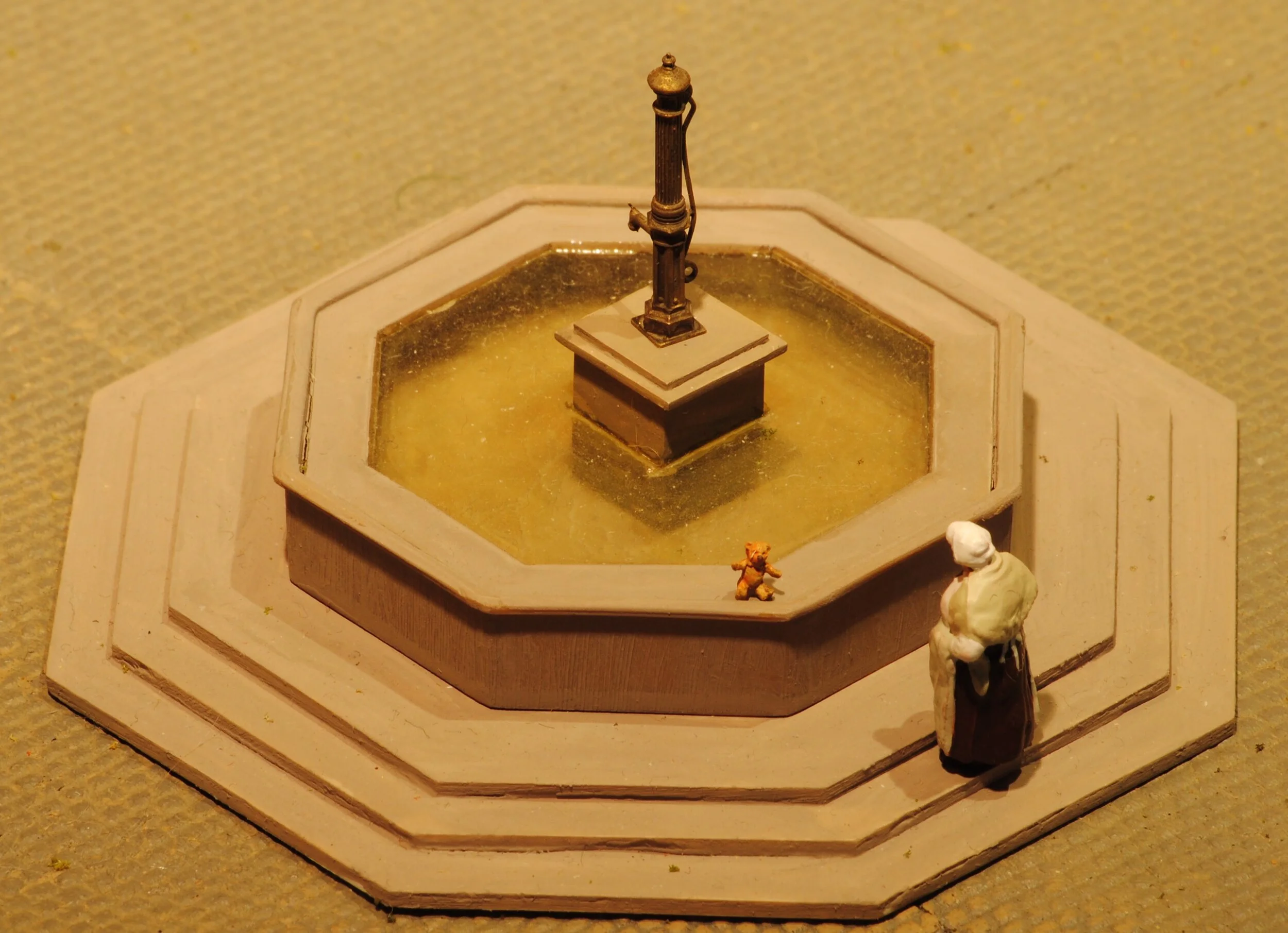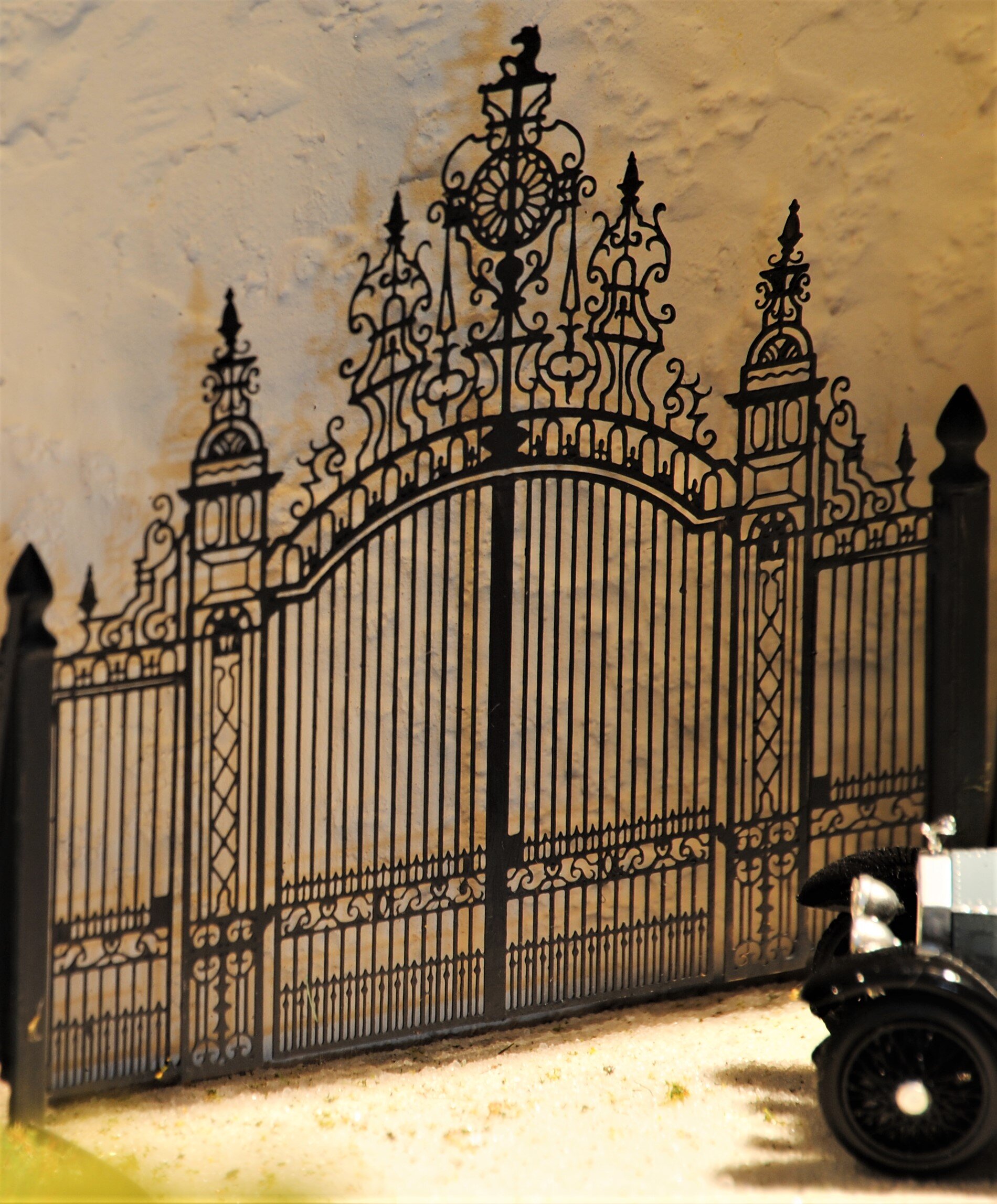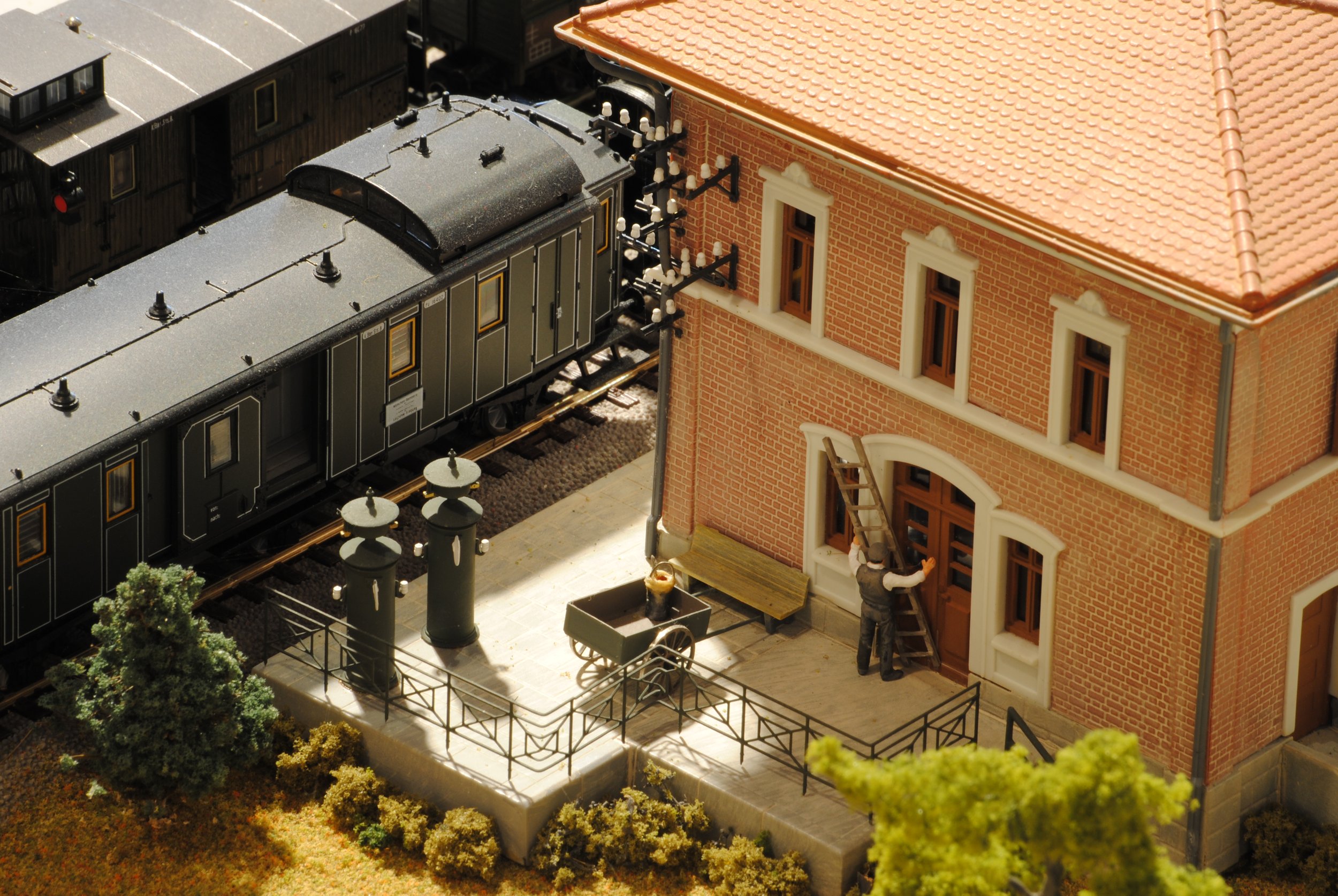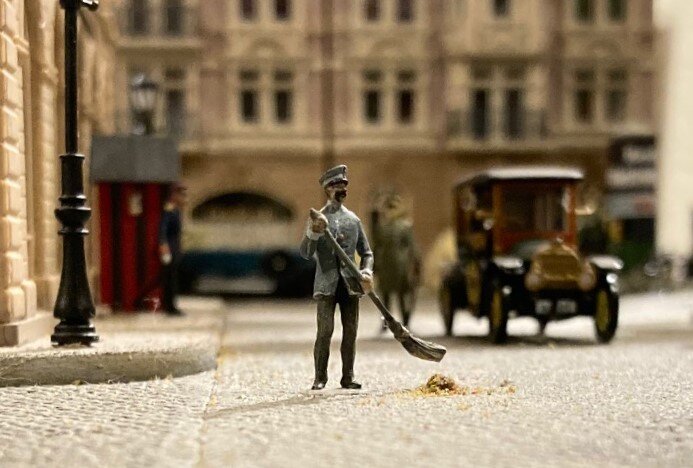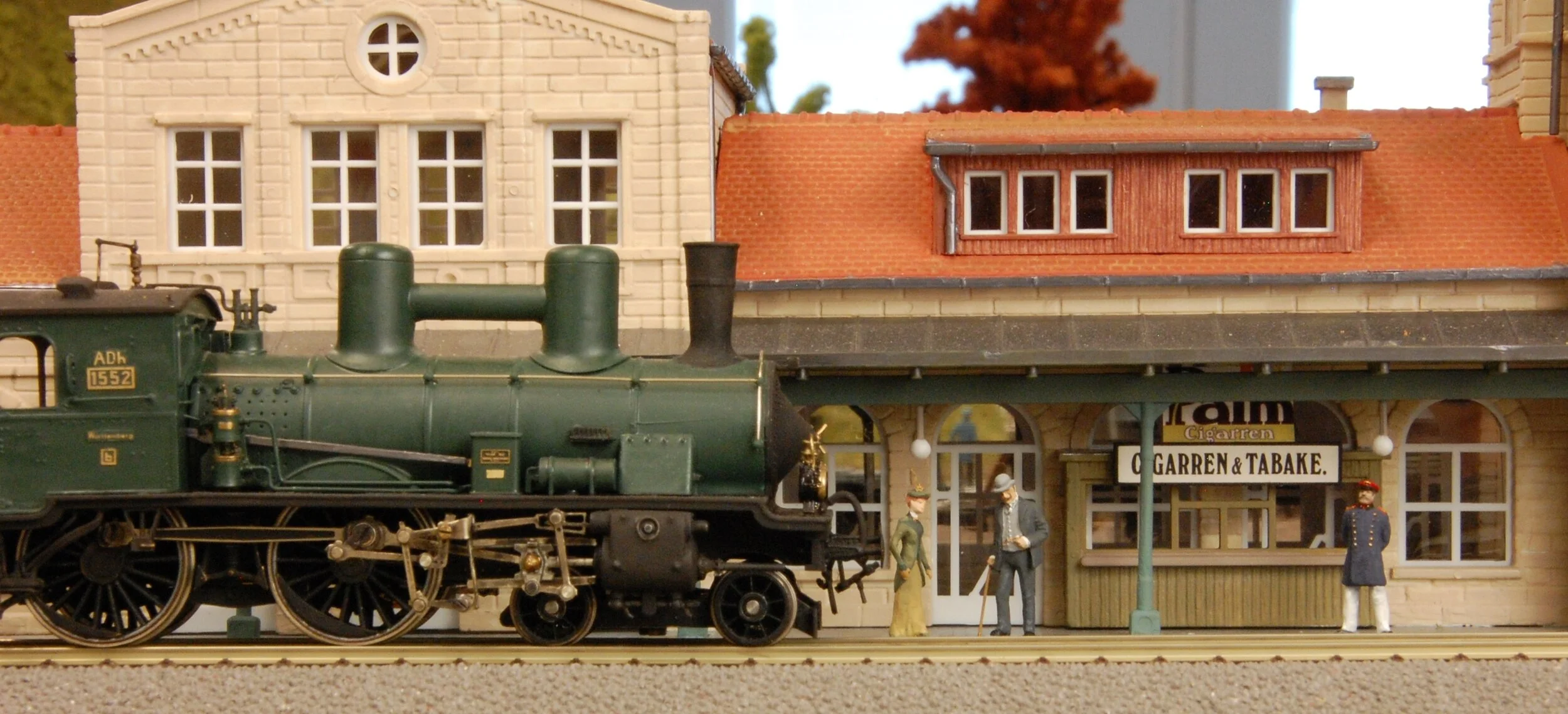
Important Small Details
Adhering strictly to the 1/87th HO scale
Much of the charm of “The Sarajevo 1914 Collection” lies in historically correct details that have little or nothing to do with model railroading except that every object – no matter how small - adheres strictly to the 1/87th HO scale established by the trains. While each of these articles deals to a greater or lesser extent with the details of The Collection, I’m devoting these words to a few “special” details that might be overlooked, some because they’re very small.
A locomotive driver and a stationmaster are seen here at the street-level entrance of an elevated signal box of the Grand-Ducal State Railways of Baden. They’re speaking with the owner of the dapple-grey horse hitched to the delivery cart of his own small brewery. Noteworthy in this photograph, at the extreme right, is the German Imperial Eagle surmounted by the words: “Kaiserliche Post” – Imperial Mail – on the side of an express mobile post-office traveling, as required, immediately behind the locomotive.
Most Americans are unaware that Europeans consider black cats to be omens of good luck. Thus the “ship’s cat” living aboard this river tug earns his keep not only as a rat catcher, but also as a good-luck talisman. In painting the captain’s jacket I imitated the silvery, oil-cloth surface of the material used to make foul-weather gear for the German Imperial Navy.
A kind lady has found this teddy bear lying near her neighborhood fountain shortly after its owner lost it and was taken home in tears. We may hope that, tomorrow morning, the little lad and his mother will return and be reunited with his much-missed, furry companion. The first “teddy” bear saw the light of day in 1903 or 1904. As the whole world knows, “he” was the nicknamesake of “Teddy” Roosevelt, President of the United States at that time. This classic, cinnamon bear is 4 millimeters long. I treasure it as a tiny commentary on German domestic life in 1914.
The full-size original of this exquisitely photo-etched French gate would probably have been made in the 1830s or later. I regret that this model doesn’t have a more prominent place on the layout because it’s one of the finest HO scale details ever produced. From the gravel surface of the driveway to the top of its horse head crest, it measures 57 millimeters or two and a quarter inches.
The profusion of telephone and telegraph connectors in this picture indicates that royalty and members of the Royal Bavarian government are frequent visitors to the Feldafing railway station. The Wittelsbachs – Bavarian royal family – have a castle here where they and Elisabeth, their most illustrious family member, the Austro-Hungarian empress, spend happy summers together, far from the stuffy protocols of Munich and Vienna.
In 1914 horse manure was encountered in streets everywhere because fifty percent of urban traffic was still horse-drawn, while in rural areas there were very few motor-driven vehicles. Crossing sweepers became extinct only during the nineteen-twenties when horse-drawn vehicles became scarce and pedestrians no longer had to watch their steps quite as closely as they had.
The full-size original of this heavy-duty truck was built by the German firm of D.A.A.G. in 1910 or 1911. The model represents an actual truck produced for the Liebig Company in France and consists of many highly detailed parts cast in bronze. Because those parts were made to fit very precisely, it was easy to assemble the model with solder. Number plates were not supplied however, and so I “borrowed” an authentic Parisian one from a 1913 photograph, set it in type, reduced it to HO scale and “dirtied” it with my favorite “industrial grime” paint mixture.
This flag, flying above the Baden-Baden station, is the standard of the heirs to the Grand Dukes of Baden. In 1914 that was Prince Max who, with the Grand Duke, is at the station today to welcome the Kaiser. Prince Max became a renowned statesman, although briefly, at the end of the First World War, saving Germany from an all but certain bloody civil war when he wrote and published the instrument of abdication for Kaiser Wilhelm II without consulting the Kaiser. Together with Kurt Hahn, his long-time administrative assistant, Max formulated the structure of what became known as the “Outward Bound” movement in education. Britain’s Prince Philip was one of the first to benefit from “Outward Bound” when he attended Gordonstoun School in Scotland, founded by Kurt Hahn who was Jewish and forced to leave Germany when the Nazis seized power.
Following a very ancient tradition, these scissors announce the trade of the artisan to be found working inside the building. He’s a tailor, one of the most renowned in all of Germany.






